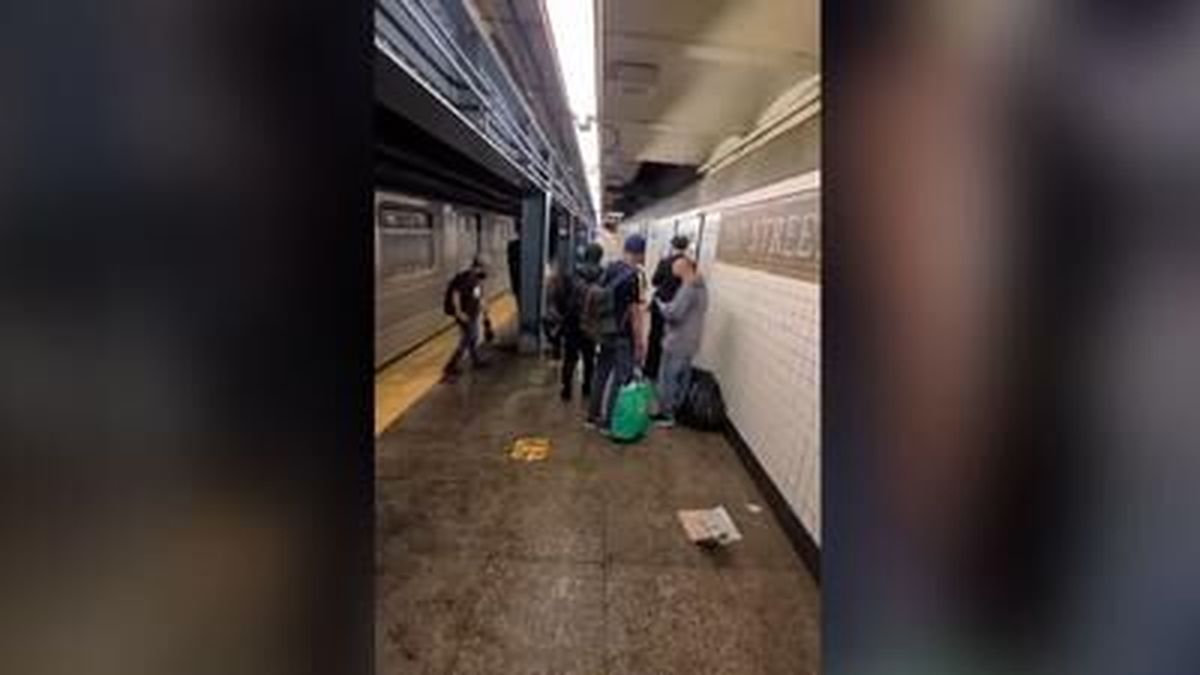Police look for missing in wake of catastrophic Ida flooding

NEW YORK – Police went door to door in search of more possible victims and drew up lists of the missing as the death toll rose to 49 on Friday in the catastrophic flooding set off across the Northeast by the remnants of Hurricane Ida.
The disaster underscored with heartbreaking clarity how vulnerable the U.S. is to the extreme weather that climate change is bringing. In its wake, officials weighed far-reaching new measures to save lives in future storms.
More than three days after the hurricane blew ashore in Louisiana, Ida’s rainy remains hit the Northeast with stunning fury on Wednesday and Thursday, submerging cars, swamping subway stations and basement apartments and drowning scores of people in five states.
Intense rain overwhelmed urban drainage systems never meant to handle so much water in such a short time – a record 3 inches in just an hour in New York. Seven rivers in the Northeast reached their highest levels on record, Dartmouth College researcher Evan Dethier said.
On Friday, communities labored to haul away ruined vehicles, pump out homes and highways, clear away muck and other debris and restore mass transit.
Even after clouds gave way to blue skies, some rivers and streams were still rising. Part of the swollen Passaic River in New Jersey wasn’t expected to crest until Friday night.
“People think it’s beautiful out, which it is, that this thing’s behind us and we can go back to business as usual, and we’re not there yet,” New Jersey Gov. Phil Murphy warned.
At least 25 people perished in New Jersey, the most of any state. Most drowned after their vehicles were caught in flash floods. A family of three and their neighbor were killed as 12 to 14 feet of water filled their apartments in Elizabeth, New Jersey.
Across the street, Jennifer Vilchez said she could hear people crying, “Help! Help!” from their windows.
At least six people remained missing in the state, Murphy said.
In New York City, 11 people died when they were unable to escape rising water in their low-lying apartments. A man, woman and 2-year-old boy perished as their Queens street turned into a raging gully, hemmed in by a concrete wall on the nearby Brooklyn-Queens Expressway.
Officials said Friday that five of the six apartments where people died were illegally converted.
New York’s subways were running Friday with delays or not at all. North of the city, commuter train service remained suspended or severely curtailed. In the Hudson Valley, where several feet of mud covered tracks, Metro-North President Catherine Rinaldi said she didn’t expect service to be restored until early next week.
Floodwaters and a falling tree also took lives in Maryland, Pennsylvania, Connecticut and New York.
While the storm ravaged homes and the electrical grid in Louisiana and Mississippi, leaving more than 800,000 people without power as of Friday, it seemingly proved more lethal over 1,000 miles away, where the Northeast death toll outstripped the 14 lives reported lost so far in the Deep South.
Ida stands as the deadliest hurricane in the U.S. in four years.
In a second wave of calamity in the Northeast, fires broke out in swamped homes and businesses, many inaccessible to firefighters because of floodwaters. Authorities said gas leaks triggered by flooding were likely to blame.
A Manville, New Jersey banquet hall exploded in flames around 2 a.m. Friday. Its owner, Jayesh Mehta, said he felt helpless and heartbroken looking at videos of his burning business.
“I don’t know what to do and how to deal with something like this,” Mehta told NJ Advance Media.